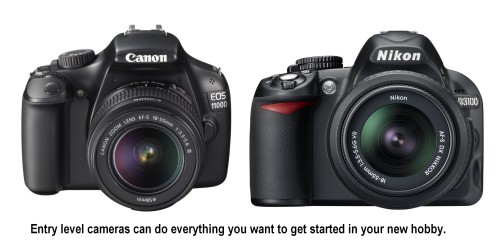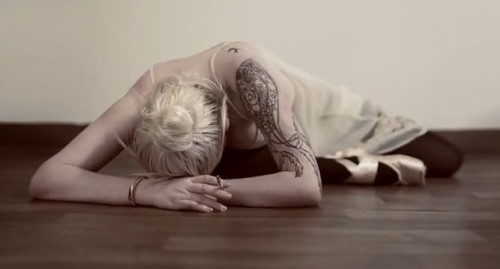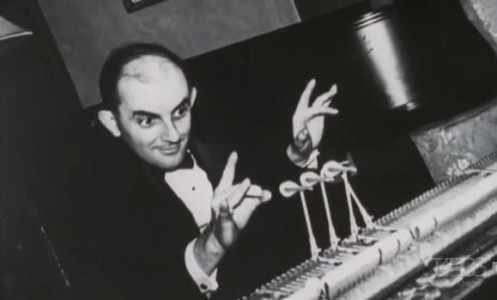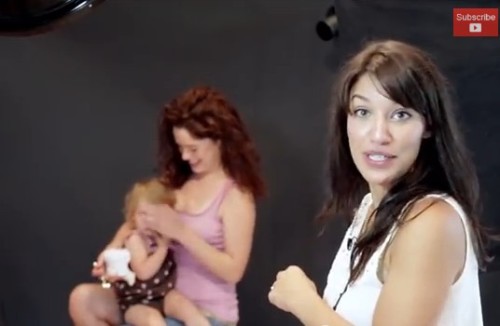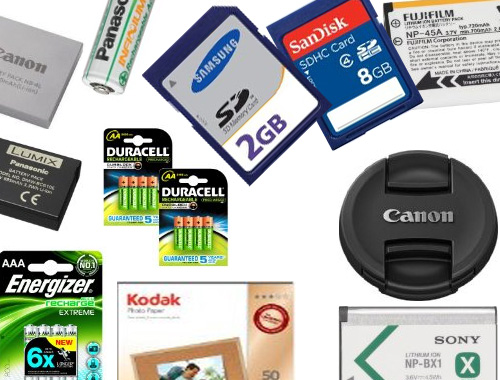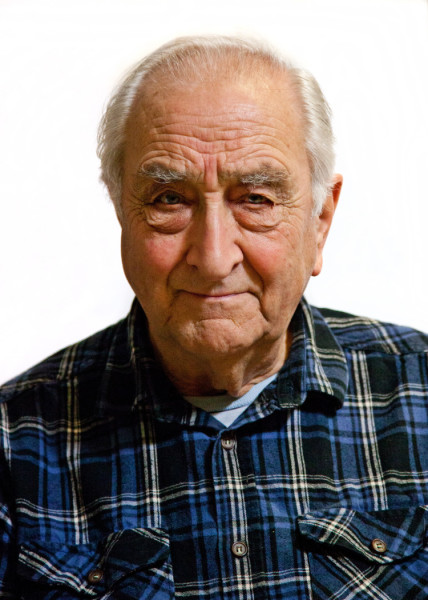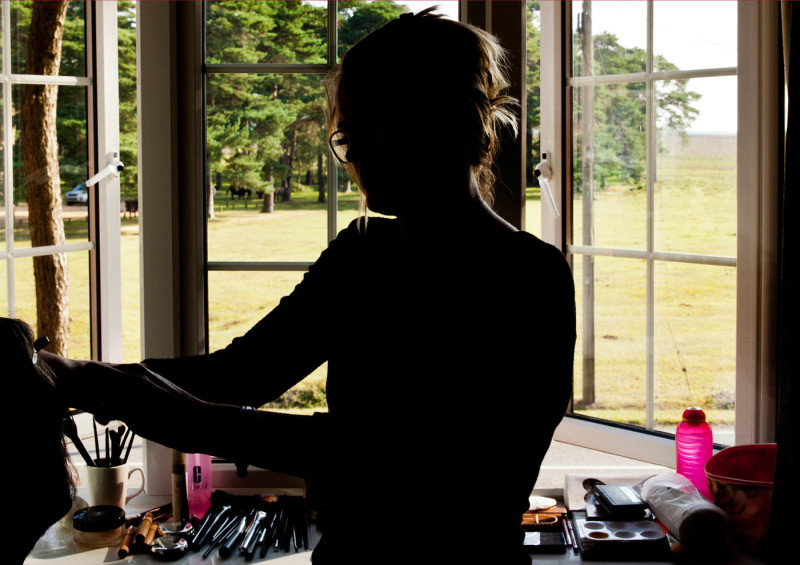
• The make-up artist •
Photographing windows from the inside creates a problem. The brighter light outside will create a silhouette inside – leaving your subject black or very dark.
Bright light outside overpowers the subject inside…
Photographing windows indoors you face a problem. The outside light is usually brighter than the inside light. It will probably overpower the light in the room. All the camera will see is a silhouette of the subject or the window frame.
Photographing windows to capture the scene outside, creates a problem with the big variation of light. From the inside to outside is a jump. Our eyes can cope with a big difference of light intensity from inside to outside. The camera cannot. This is a classic problem in photography.
What can the camera cope with?
Really good sensors in a modern DSLR can possibly cope with a range of around 12 stops of light, maybe a little more. But, a camera cannot see that range all at once. We have to change the sensitivity of the camera to light. Then it is able to see the extremes. We do this by changing the ISO.
However, if the difference between a dark and bright area in the lens is greater than about two stops we will lose detail somewhere. Some dark areas will be too dark. Some light areas will be blown out white.
Photographing windows can be done with a compromise. We could try to expose for the darker subject inside that is facing us. The subject will look fine, but, the outside will be bright white – blown out.
We could focus the camera out of the window on something in the brighter light. This creates the problem in the photo above (and in “Through the old window 1”, below). The inside will be too dark and the subject black, or with lost detail in the dark. But at least we can see the scene outside.
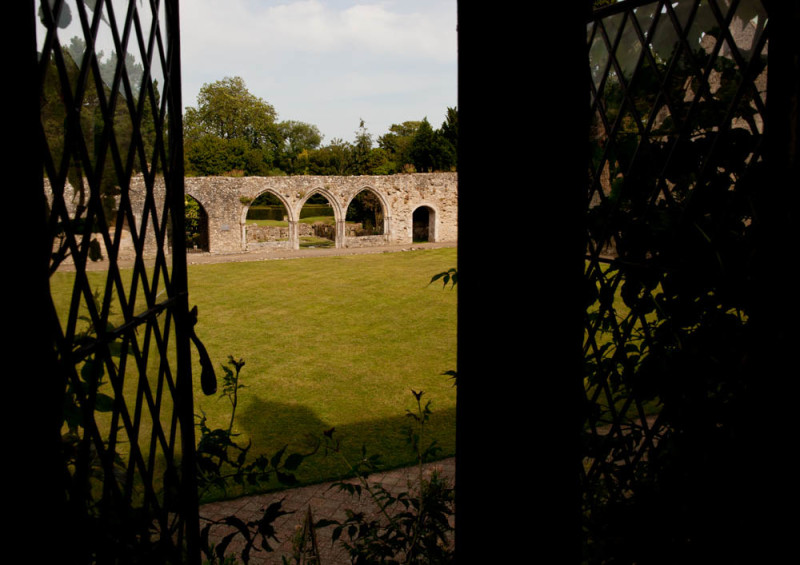
• Through the old window 1 •
The big difference in light levels inside and out leaves the frame in silhouette. That is not how you would see it in real life.
The human eye can see around 20 stops of light. That’s a whole lot more than a camera. We do not see a silhouette like the camera does. In the top picture I was easily able to see the detail of make-up artist, her face and clothes. In the first window picture above I could see all the fine detail of the stonework. In addition, the human eye does not need to adjust our ‘ISO’ to achieve this miracle. We can, maybe with a little eye watering, cope with big differences in light levels.
When photographing windows from the inside…
So how do we photograph out of a window without creating that silhouette effect?
There are several things you can do…
- You can set the camera to use all the focus points on your viewfinder. Then the camera will take an average light reading across the lens. It will balance between the darker internal subject and outside light. This may help the camera cope. But between one and two stops brighter outside the camera will still begin to lose detail in the bright areas and the dark areas. It’s not a good compromise unless the light outside is only slightly brighter than inside (i.e. one stop, or less, difference).
- As you move back, photographing windows becomes easier. They get relatively smaller and less bright. However, it’s not an option in a small room, as in “The make-up artist” picture above. You may still have a problem if photographing windows where outside is still greater than two stops brighter than your subject.
- You could also close the curtains a bit. However, the point of the exercise is lost if you cannot see outside properly. Ideally, we want to see our subject and the view from the window.
- The only practical option in most cases is to raise the internal light levels. Then the subject will be brighter and the difference between inside and outside less than the two stops that will create a silhouette. This will allow the camera to make an exposure that will be balanced between inside and out.
Photographing windows – think about light levels
So, what do you do to raise the light levels? Simple, brighten the room…
- Let light in through another door or window somewhere.
- Use some of the light from the window itself by using a reflector to raise the light levels on your subject.
- Turn on some lights. (Be careful of colour casts with artificial light).
- Use a flash on your camera.
Using natural light is the best option. It will colour-match to the light coming through the window and not create funny colour imbalances.
Reflected light is great too. When you are using light reflected from the primary source of light it will never be brighter than that primary source. This means it will be both colour matched and look natural as the main source will not be overpowered. The slight variation will help sculpt the shadows and give a 3d effect too. So use a large sheet of white card or a photographic reflector to raise the light levels on your subject.
Lights in the room are more problematic. Artificial lights create odd colour variations. Fluorescent lights and tungsten lights both have strong colours that are different from daylight. Our eye compensates for them normally. In a picture the colours really stand out and can look very odd.
Flash has problems too. It tends to be a very bright, harsh light. If it is direct onto something the harsh, strong light tends to eliminate shadows. As a result things look flat and lifeless.
There is a place for flash. It is especially good if you can get it off camera and to the side a bit. It creates shadows and textures. This makes the subject more life-like and 3d.
Another technique is to bounce the flash from a wall or ceiling nearby. The light is spread around and appears more even on the subject. It is always best to try a few test shots. If the flash is very bright it looks artificial. Turn the power of the flash down. Also, bouncing it off nearby surfaces will lower the light intensity. Try to get the light in proportion to the expected light levels in a room.
And the trick is…
To get it right you need to even out the difference between the outside light levels and the inside. If there is less than one stop of light difference between inside and out – you have a solution. So, balance the light levels.
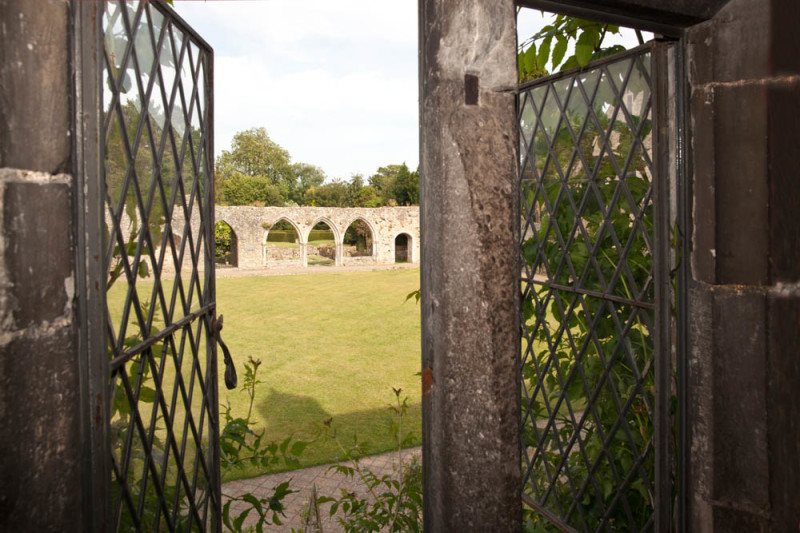
• Through the old window 2 •
If you raise the levels of illumination inside the room, the silhouette is lost. Instead the frame becomes illuminated. You see it in the picture like you would in real life.
This is the bit where trial and error comes into play. Internal lights are often too dim for photography. So you might need to supplement them with more light or “fill-in flash“. Another possibility is to add a bit of light reflected back on the frame (or your subject). Again, this will supplement the natural light. In “Through the old window 2” I used flash which was bounced off a white ceiling. This lowered the power of the flash and spread the light around a bit. It looked a lot more natural than when I tried it with the flash directly at the stonework.
Comments, additions, amendments or ideas on this article? Contact Us
or why not leave a comment at the bottom of the page…
Like this article? Don’t miss the next — sign up for tips by email.
Photokonnexion Photographic Glossary – Definitions and articles.
Exposure Links:
Definition: Exposure
Definition: Exposure Triangle
Definition: Aperture
Definition: f number
Definition: ISO
Natural light; Sunlight (A ‘Glossary’ entry)
Other links:
Definition: DSLR; Digital Single Lens Reflex Camera
Definition: Fill-in Flash; Fill-in Light

Damon Guy (Netkonnexion)
See also: Editors ‘Bio’.
By Damon Guy see his profile on Google+.

